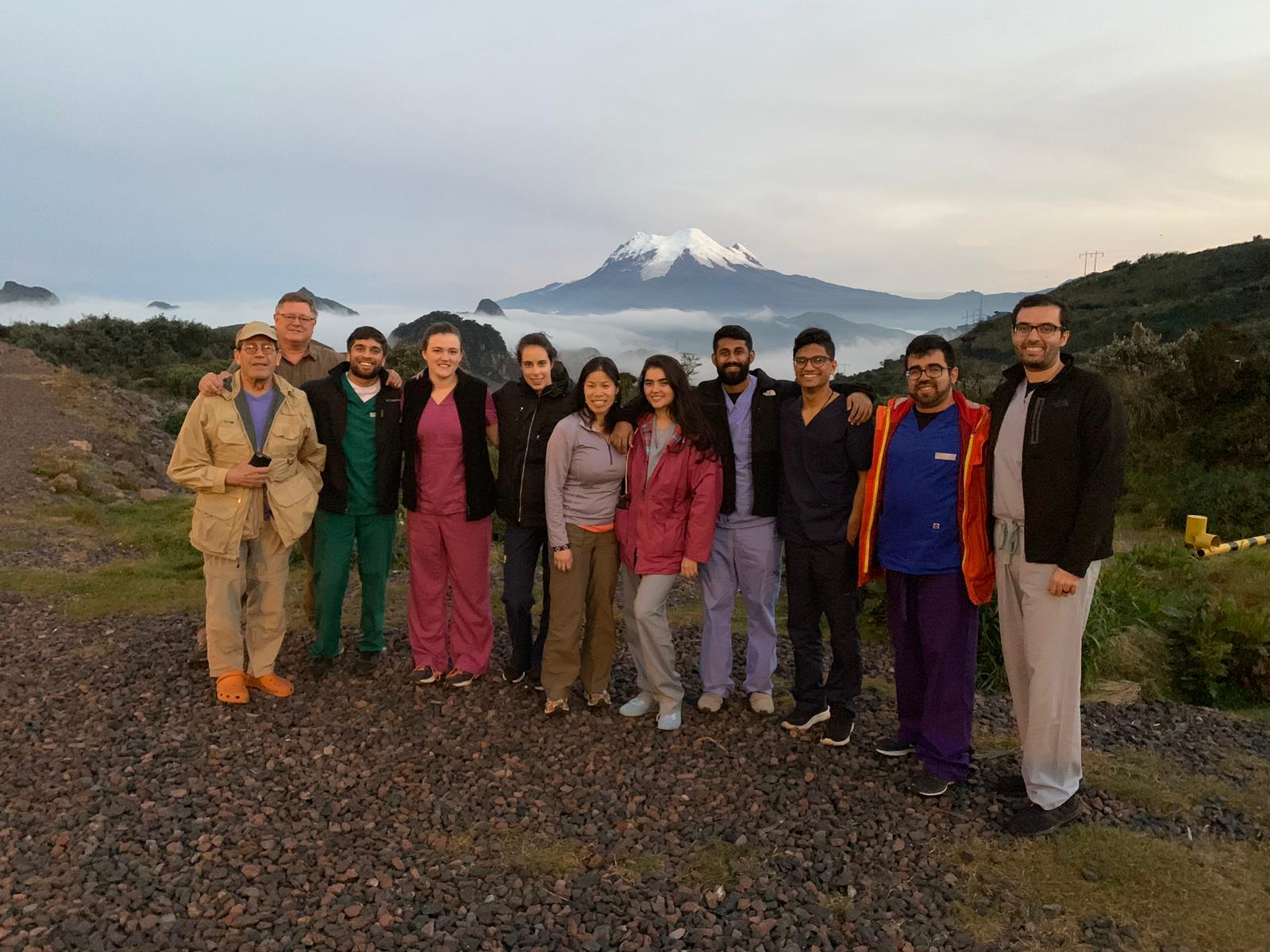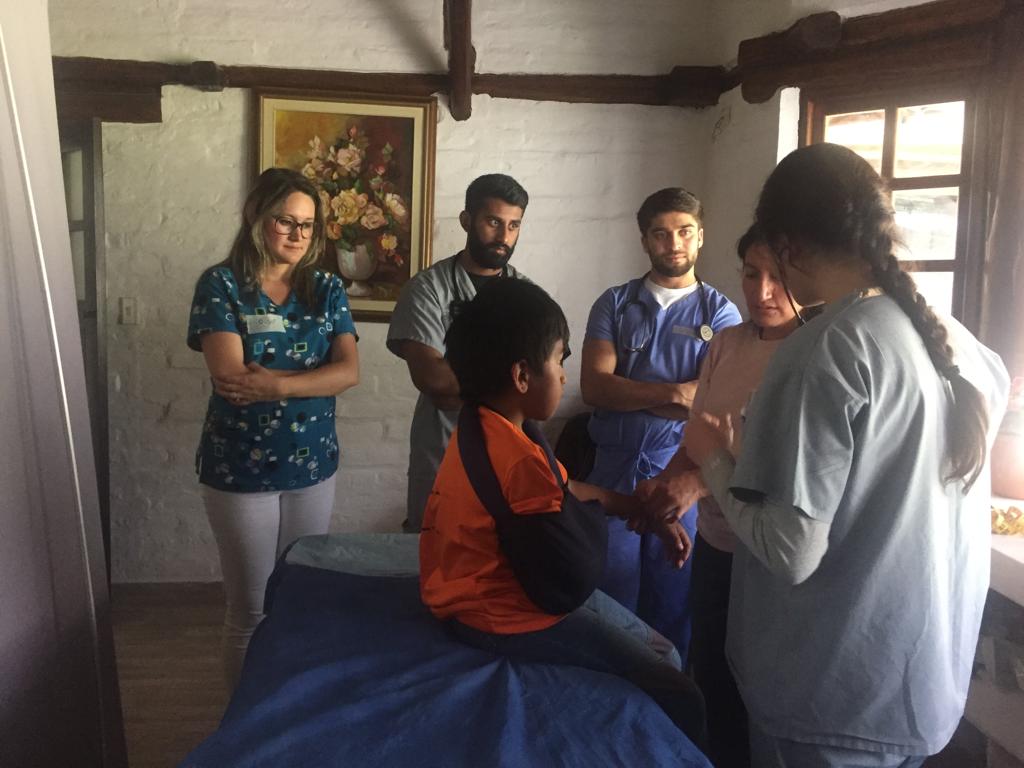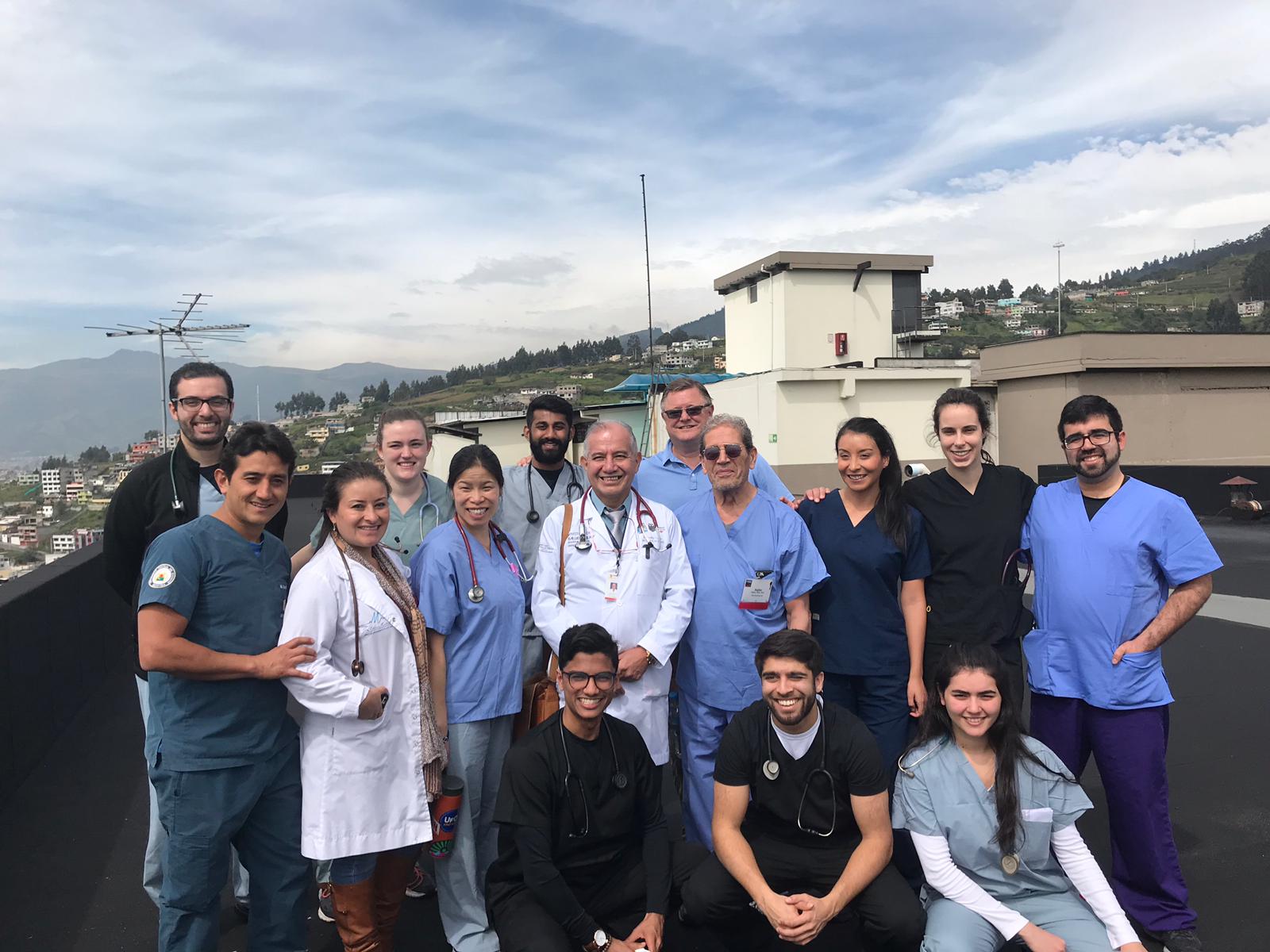
While on a scheduled break from classes earlier this year, several medical students took advantage of the opportunity to explore the realities of urban and rural medicine in another country.
Eight medical students and three volunteer physicians traveled with the Wayne State University School of Medicine’s World Health Student Organization to Ecuador this spring to work and learn from Ecuadorian physicians and volunteers. They spent two days completing clinic work in the town of Nayon, then traveled to Southern Quito to spend two days shadowing at the Enrique Garces Hospital.
The World Health Student Organization is comprised of medical students whose mission is to gain rich medical and cultural experiences outside of their immediate communities. It is the organization’s goal to provide the highest standard of medical care at no cost to underserved populations around the world.
Medical student Rafael Ramos, Class of 2022, traveled with the group. He and six other students were finishing their first year of medical school. Ramos said the lessons they learned during the week of traveling carried them into the start of their second-year courses.

“In an effort to explore more sustainable involvement options in country, along with giving the student volunteer the opportunity to become immersed in a different health care system, the trip was divided into two distinct in experiences,” Ramos said.
During the first two days, students set up a small clinic in the town of Nayon to work with Stephanie Martinez, M.D., who has been working with Wayne State since she was a medical student.
“This was a more traditional medical brigade, where community members had the opportunity to get general checkups which could then be focused depending on some of the maladies they were suffering from. We made a point however, of working with the in-country staff and interpreters to not only diagnose the people we were seeing, but to refer them to specific services within the local health care system so they could get the necessary follow-up treatment,” he said.
“Students on the brigade got a chance to shadow and learn from both the American and Ecuadorian physicians, with hands-on experience in the form of full physical examinations being a staple of the work we carried out.”
The Ecuadorian doctors the students worked with took the time to explain the nature of the public health system in their country, and how they fit in as visiting physicians-in-training. The WHSO encourages collaboration and engagement in dynamic learning environments, so while at the clinic the students who were comfortable speaking Spanish had the opportunity to carry the patient interviews.
“It was a nice blend of the skillset we had learned over the first year with our own linguistic abilities,” Ramos added.
During the remainder of the week, the students shadowed local physicians at the Enrique Garces General Hospital, a large public hospital which services most of the southern half of Quito.

“This was a phenomenal experience because we were able to learn from physicians, residents and medical students on their approach to some very unique cases, all while balancing some of the financial and service restrictions which come from working in such a large public hospital. Numerous students were given the opportunity to round the Internal Medicine and Pediatric floors, and most students were given the chance to scrub into and observe a number of surgeries. We also received a crash course on the differences in training and education regimens between the U.S. and Ecuador, and on some of the research the residents carry out to optimize their care capabilities,” Ramos said.
One of the biggest endeavors undertaken by the WHSO every year is to send students on medical relief missions over their spring break. This is the students’ chance to acquire a better understanding of the health care needs of developing nations and get exposed to clinical settings not routinely found in the United States.
“All of the students on the trip took their own lessons from the trip, mostly because each of the cases and brigade roles we played had enough variety to provide a range of experiences. This was a good opportunity to internalize many of the lessons and tools we had been given over our first year at Wayne, as well as gain a new perspective on the livelihood, difficulties and capabilities of the people and physicians of a country none of us had visited,” he added.
The students are each actively engaged in either clinical or service groups on campus.
“This experience served to reinvigorate our desires to become a force of change throughout the course of our medical educations, even if the problems we face are multi-faceted and daunting,” Ramos explained.
“Ecuador is a wonderful country, and we’re all glad we had a chance to meet some great people, eat great food and experience the amazing scenery that only the Andes may offer. We will work to make sure future medical students have the opportunity to engage in this activity, and maintain a good working relationship with the physicians who provided unfettered access to their clinics, hospital and insight.”
View photos from the WHSO trip to Ecuador, provided by Rafael Ramos.
The WHSO aims to teach students clinical knowledge, facilitate collaboration with peers and other medical professionals, and encourage engagement in dynamic learning environment. The WHSO also serves the community by volunteering at local outreach projects and teaching fellow students about global health through speaking engagements, seminars and medical relief mission trips. Learn more at waynewhso.org or contact Kristie Khatibi at kristie.khatibi@med.wayne.edu.